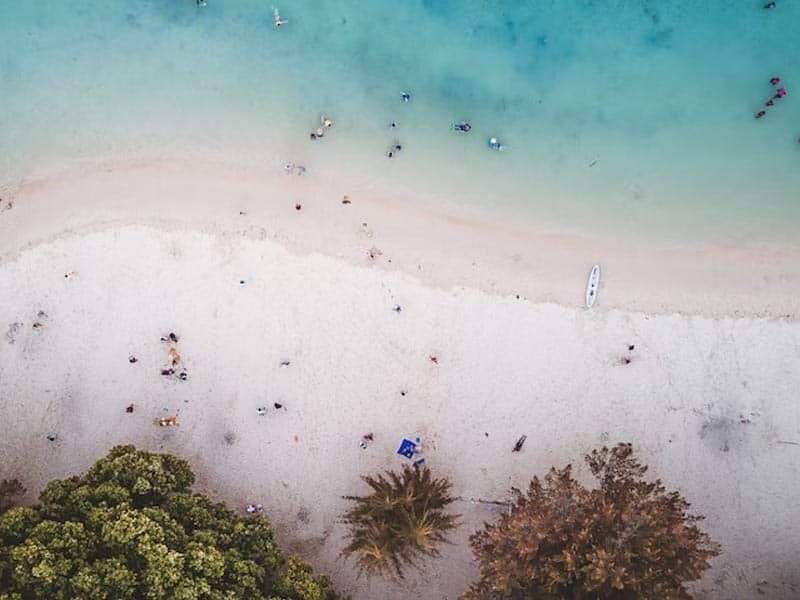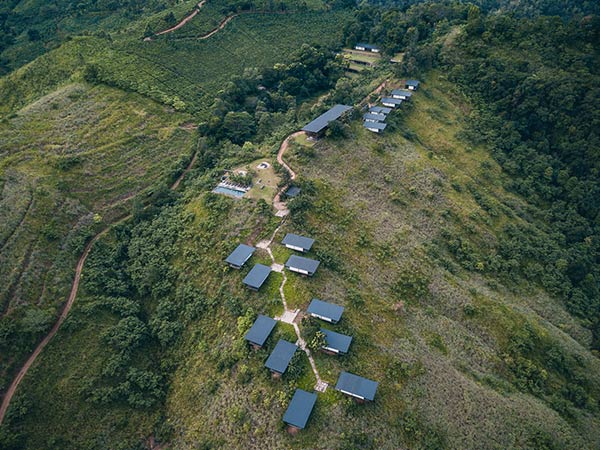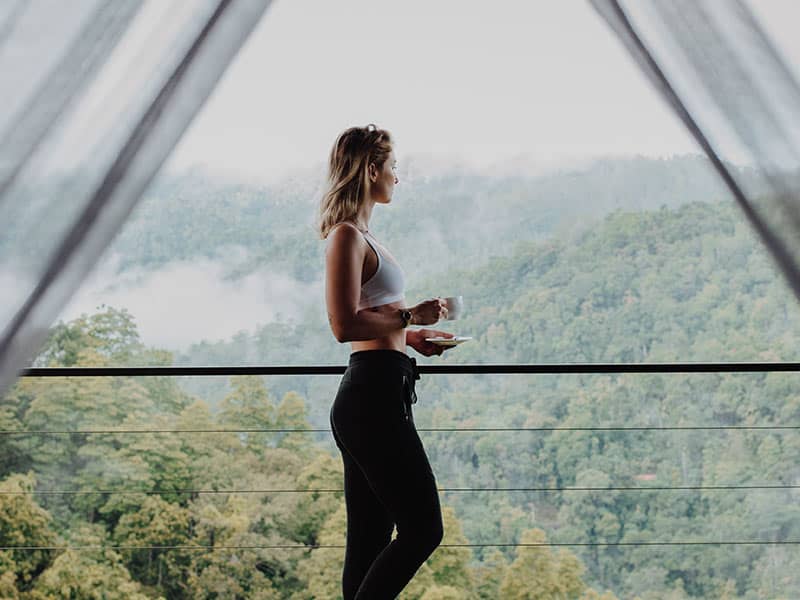The economy was impacted, the health sector was under pressure, leaders had to make important decisions overnight and educators and employers had to adapt. Every part of society was affected drastically by this virus, bringing with it global panic, worry and stress. But, at the end of June, things seem to be taking a positive turn. Social distancing regulations have been relaxed, restaurants and offices are adhering to the ‘new normal’ that was spoken of and best of all the ‘numbers’ that we all anxiously tracked seem to be stabilizing.
Adhering to so much change and turmoil in the world for the past 6 months, was not easy even on an individual basis. Dealing with quarantine, changes in work and even fear of contracting the virus may have led to much built-up tension that we are happy to alleviate. If you were looking for some good news today, we have got it. Sri Lanka is opening borders for international tourists from August 1st. Although this might take you by surprise and you might be hesitant to make travel plans, read this article through to find out why Sri Lanka is the safest country in the world from Covid-19 and the best choice if you are a traveller looking for an escape from all that is happening around.
COVID in Sri Lanka
Yes, Sri Lanka is a small country in the middle of the Indian Ocean with a struggling, nay, developing economy. However, the measures that have been taken by the government and the tri-forces amidst this global crisis has proved to be very effective. The approach from the beginning was to ‘flatten the curve’, preventing the spread of this highly contagious disease within this island. A strict lockdown was implemented as early as March 15th, which resulted in a lot of frustration but also a much healthier society. The figures and statistics are proof as to how Sri Lanka has done an admirable job in curbing the spread of this fatal disease.
With a population of 21.4 Million people, Sri Lanka has had only a total of 2,763[i] Corona Virus cases. Out of which only 658 people are still tested positive while 2,904 have recovered and been discharged. In the last 6 months, we have had only 11 unfortunate deaths due to this virus, resulting in Sri Lanka being one of the countries with the lowest fatality rate and highest recovery rate[ii]. The comparison between Sri Lanka and a few other countries alongside the global average is indicated in the graphs below.


These graphs indicate that Sri Lanka has done much better in containing the spread of COVID-19 than the global average. Sri Lanka’s fatality rate is at 0.4% whereas the global average is at 4.05% and the UK has an astounding rate of 15.33%. Similarly, Sri Lanka’s recovery rate is at 75.79% quite ahead of the global average of 60.98%.
New Zealand has been in the spotlight as the Prime Minister, Jacinda Ardern, proudly announced that they have been successful in curbing the spread of this virus, resulting in a lot of international praise and awe. However, if we compare New Zealand’s impressive statistics with Sri Lanka’s it is clear that Sri Lanka has not received the recognition it deserves. Sri Lanka has a population that is four times bigger than that of New Zealand’s. Even though the total number of cases in New Zealand is lower than the number of cases in Sri Lanka, when the number of cases and deaths are measured per million, Sri Lanka has a better rate.
Additionally, if we take a closer look at the number of cases in Sri Lanka, it is clear that the majority of people who were infected are those from quarantine centres or from the forces. Unfortunately, the close contact that members of the Navy and other forces had with the initial COVID patients resulted in a higher number of official cases/infections. However as they were situated in camps, their contact with members of the public was quite minimal, which was yet another factor that helped flatten the curve. Out of 2,763 cases in Sri Lanka, 2,440 cases are either foreigners, people from quarantine centres or personnel in base camps. Only 11.32% of the number of cases in Sri Lanka belong to the general public, which is only 313 people from a population of 21.4 Million.
If you were worried before, it is now clear that there is no reason for anxiety or panic. The numbers have consistently been low and the majority of the cases belong to those who have not had interaction with the public, ensuring that the spread of the virus is minimal. However, this does not mean that precautions aren’t been taken.
Precautions
Although the numbers are low and the curve is flattened, Sri Lanka has recognized the gravity of this deadly virus and refuses to take this situation lightly, continuing to approach it with the intent of the greater good. All public places such as restaurants, malls and grocery stores have been inspected thoroughly before being allowed to open. Additionally, a clear set of instructions and procedures that needed to be followed were given as a precautionary measure. Temperatures are checked at the entrance, hand sanitizers are provided and people who have any symptoms relating to the virus are strongly discouraged from going out except to the hospital. Although offices have reopened, most function on a roster basis, reducing the number of people that will be gathering in a place. Universities and schools are yet to open. Physical and social distancing is still encouraged as to make sure that we take all the necessary precautions in order to avoid a second wave.
Even in terms of travel, Sri Lanka has enforced a number of regulations[i] to ensure safety while the comfort and enjoyment of travel is not compromised. The visa fee has been slightly increased to 65$ in order to cover the cost of the tests travellers will be required to take on arrival as well as a few days after. The accommodation that will be available for tourists will be government-approved, monitoring that the health regulations are followed. Tourist attractions will also reopen with the additional feature of enforced hygiene and distancing measures in place. Unfortunately, tourists will not be allowed to travel by public transport, but fortunately, the taxi service in Sri Lanka is cheap and experience of its own.
Travel
Sri Lankans have looked after each other during this very uncertain time. People have donated money and food, volunteered their services, banded together as a community to help stranded tourists[ii] and gone out of their way to help those who were more affected by this situation. Hotels and resorts have volunteered their accommodation as quarantine centres at a much lower price and served food to those who were in need in order to play a small role in helping the situation in Sri Lanka.
Unfortunately, the economy of Sri Lanka has been affected quite drastically this year. As tourism was the major source of income, the ban on international travel has led to an extreme decline in revenue. Opening borders while ensuring that Sri Lanka is the safest country to travel to post-COVID-19 is the nation’s chance to bounce back and recover from this loss.
It’s a win-win situation, Sri Lankans are enthusiastically awaiting their opportunity to shower tourists with hospitality and love while tourists will get to enjoy the beauty and adventure of travel in the picturesque island of Sri Lanka as a long overdue and much-deserved vacation. There are many reputed wellness retreats in the country that will help you leave the world behind while surrounded by nature, comfort and luxury. The aim of these retreats is to help rejuvenate you through Ayurveda, spa treatments, yoga, massages and much more and alleviate all that tension and stress you may have been feeling. A wellness retreat is a perfect escape for anyone as it will give you the pampering you deserve as well as the space that you have craved for to work on yourself. There is nothing that a comfortable stay in the tropical jungle can’t fix.
Travel may sound risky, but the green light has been granted and if we travel responsibly, there is nothing stopping you from enjoying your vacation in the safest country in the world.
All statistics are as of 24th July 2020.
[i] https://www.standard.co.uk/lifestyle/travel/travel-news/when-can-i-travel-to-sri-lanka-a4464926.html


